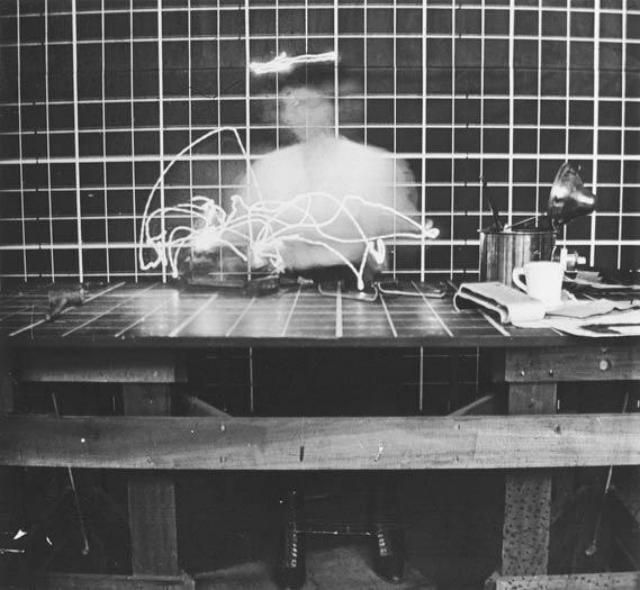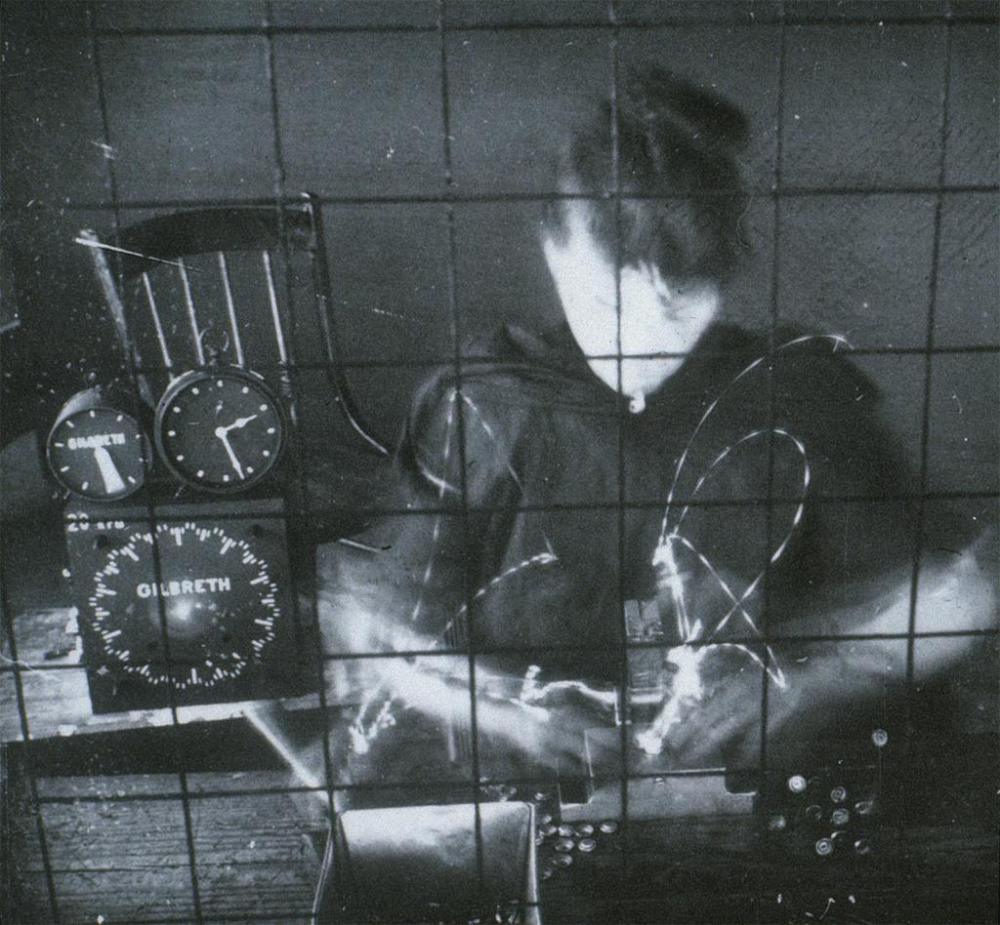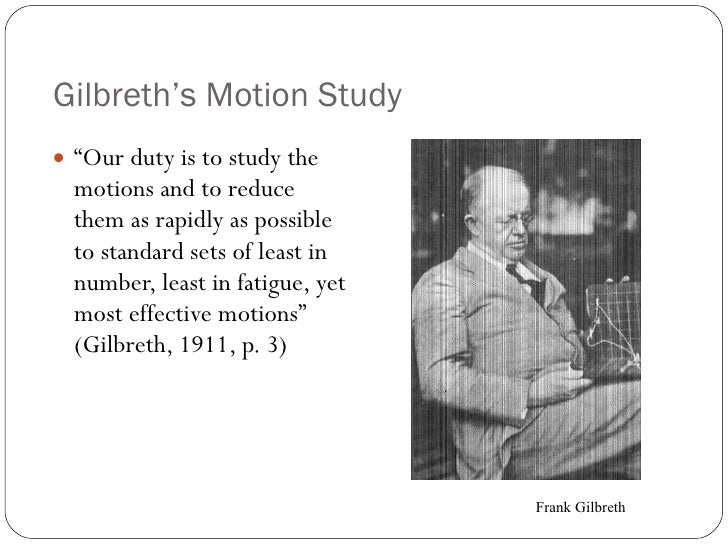
Untitled, Efficiency Study, Frank and Lillian Gilbreth, 1917 Motion
Lillian Evelyn Gilbreth, (born May 24, 1878, Oakland, California, U.S.—died January 2, 1972, Phoenix, Arizona), American psychologist and engineer who, with her husband, Frank Bunker Gilbreth, developed methods to increase the efficiency of industrial employees, most notably time-and-motion study.

Photography and Visual Culture — Timemotion studies of Frank and
Original Time & Motion Study Video Frank Gilbreth (1868-1924) and his wife Lillian (1878-1972) created an entirely new method of time-and-motion study on how to improve industrial.

Exposure Motion efficiency study, photographed by Frank Gilbreth
This method was later expanded by Taylor's disciples, Frank and Lilian Gilbreth, who focused on motion [2]. The Motion Study method sought to make processes more efficient by reducing the motions involved. These two techniques, time studies and motion studies, became integrated into a widely accepted method in scientific management referred.

💋 The gilbreths and motion study. Frank Bunker Gilbreth, Sr.. 20190114
Frank & Lillian Gilbreth: Time and Motion In the modern world, we often wonder how we maximise our productivity, so we can have a successful work life and also a thriving family life. Two people who could have told us about that were Frank and Lillian Gilbreth.

Time and Motion Studies Die Vermessung von Arbeit
Gilbreth co-authored with Lillian: Time Study (1916); Fatigue Study (1916); Applied Motion Study (1917); and Motion Study for the Handicapped (1919). It wasn't long before Gilbreth moved away from construction. Together with his wife, they focused on the link between psychology and motion. With her strong psychological background, and his.

Photography and Visual Culture — Timemotion studies of Frank and
time-and-motion study, in the evaluation of industrial performance, analysis of the time spent in going through the different motions of a job or series of jobs. Time-and-motion studies were first instituted in offices and factories in the United States in the early 20th century.

Gilbreth Motion Study Brick Laying Study Taylor Time
Frederick Winslow Taylor introduced stop watch time study in 1881 in the MIDvale Steel Company in Philadelphia (1). The IDea was not his, but came from one of his instructors at the Phillips — Exeter academy in Massachusetts, the mathematician (Bull) Wentworth, who used a stopwatch to determine how long it would take an average student to.

Taylor_time motion study of worker at a braiding machine_1920
Gilbreth Time and Motion Study in Bricklaying BodilyInteractive 46 subscribers 108K views 13 years ago Frank Gilbreth (1868-1924) and his wife Lillian (1878-1972) created an entirely new.

Time and motion study, Artist inspiration, Light painting
Frank Bunker Gilbreth (July 7, 1868 - June 14, 1924) was an American engineer, early advocate of scientific management and a pioneer of time and motion studies. Lillian Evelyn Moller Gilbreth (May 24, 1878 - January 2, 1972) was one of the first working female engineers holding a Ph.D. A pioneer in ergonomics, she patented many kitchen appliances that made work in the kitchen easier.

Time and Motion Study Pioneers Frank and Lillian Gilbreth — ISSSP for
Frank Bunker Gilbreth (July 7, 1868 - June 14, 1924) was an American engineer, consultant, and author known as an early advocate of scientific management and a pioneer of time and motion study, and is perhaps best known as the father and central figure of Cheaper by the Dozen .

Frank Gilbreth, Motion Study, 1913 Workefficiency studies Light
DOI: 10.1093/obo/9780199846740-0027 Introduction Time and motion study (also referred to as motion and time study, the terms are used interchangeably) is the scientific study of the conservation of human resources in the search for the most efficient method of doing a task.

😊 The gilbreths and motion study. Frank and Lillian Gilbreth motion
In fact, in a period characterized by rapidly changing business dynamics and troubled labor-management relations, the Gilbreths found that their motion study methods, though sound in theory, at best produced only partial and temporary efficiencies in practice, and more often than not exacerbated tensions, not only between the workers and manager.

💋 The gilbreths and motion study. Frank Bunker Gilbreth, Sr.. 20190114
Lillian Gilbreth's Study of Time and Motion BY Ben Walker Lillian Gilbreth was an extraordinary woman who was ahead of her time. She and her husband, Frank Bunker Gilbreth, made impressive contributions to engineering, efficiency and management, but their work also significantly impacted the world of cleaning — both directly and indirectly.

What is Time and Motion Study by Frank and Lillian Gilbreth YouTube
A time and motion study (or time-motion study) is a business efficiency technique combining the Time Study work of Frederick Winslow Taylor with the Motion Study work of Frank and Lillian Gilbreth (the same couple as is best known through the biographical 1950 film and book Cheaper by the Dozen ).

Time and Motion Study Pioneers Frank and Lillian Gilbreth — ISSSP for
Six Sigma Pioneers Time and Motion Study Pioneers: Frank and Lillian Gilbreth Time and Motion Study Pioneers: Frank and Lillian Gilbreth One of the eight wastes in Lean is Motion: Unnecessary movements by people. Two of the pioneers in studying motion and how to make it more efficient were the husband and wife team Frank and Lillian Gilbreth.

Frank and Lillian Gilbreth's Motion Study Video & Lesson Transcript
Frank Bunker Gilbreth, (born July 7, 1868, Fairfield, Maine, U.S.—died June 14, 1924, Montclair, N.J.), American engineer who, with his wife, Lillian Gilbreth, developed the method of time-and-motion study, as applied to the work habits of industrial employees, to increase their efficiency and hence their output.